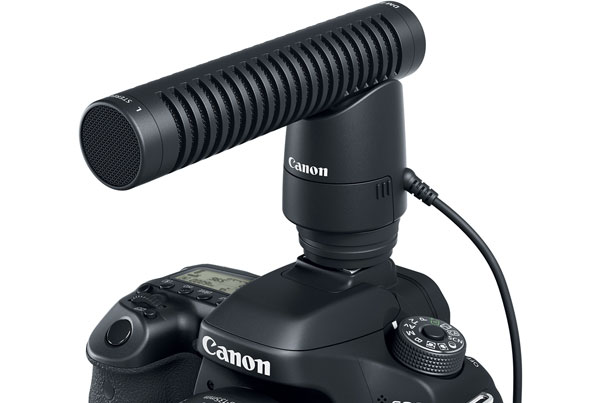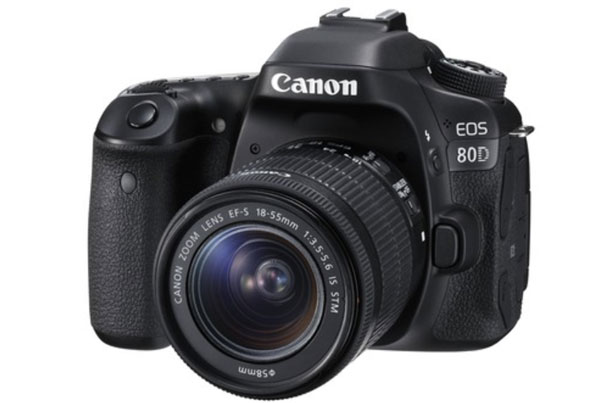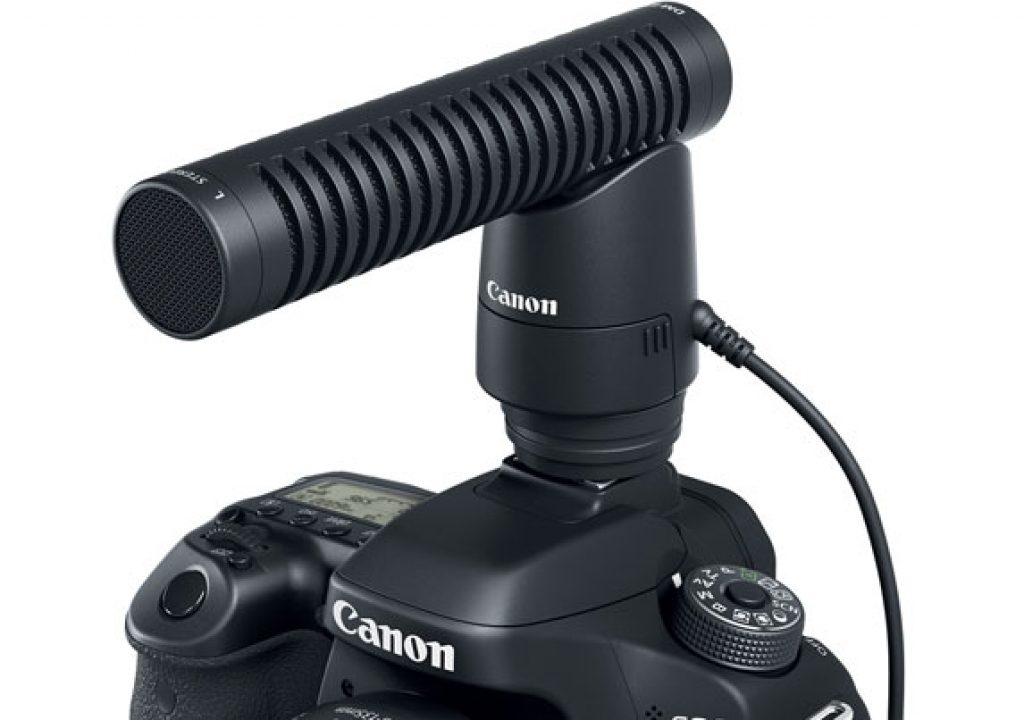
The new Canon EOS 80D DSLR from Canon continues to use Dual Pixel AF, now faster and more reliable than the one present on the EOS 70D. But to look at the EOS 80D and fully understand it, one has to look at all the rest introduced with the camera.
The previous article published here at ProVideo Coalition, EOS 80D and a new powerzoom for video suggested already what could be expected, and Canon just confirmed the specifications. And added some more! The new camera is faster and better, both for photography and video. With a suggested retail price of $1199.00 for the body only, the EOS 80D becomes a serious competitor for even the EOS 7D Mark II, which does not have this updated DPAF and misses a touch screen.
In fact, with everything it offers in the video segment, the 80D appears as a better option than the 7D Mark II for video, and makes the specifications of a full frame camera like the EOS 6D seem dated. After the launch of this model, in March, it will be interesting to see what Canon prepares for Photokina, regarding the expected EOS 6D Mark II and a new EOS 5D Mark IV.
What seems certain from now on is that Dual Pixel AF, which Canon refers to as DAF in the EOS 80D press-release, is here to stay and will probably be present in most of their line up, even as a feature of the mirrorless cameras Canon promises for the end of the year.

The Dual Pixel CMOS AF employs,” a new Canon CMOS sensor with which all of the effective pixels are able to perform both still imaging and phase-detection AF simultaneously to achieve dramatically improved AF performance during Live View and video shooting. The Dual Pixel CMOS AF technology in the Canon EOS 80D camera features enhanced tracking sensitivity and is compatible with the full line of Canon EF Series lenses, including the new Canon EF-S18-135mm f/3.5-5.6 IS USM standard zoom lens.”
According to a preview of the camera at DPReview, “Dual Pixel AF remains one of the most compelling video AF solutions to date” and in the EOS 80D “Dual Pixel AF has been upgraded to allow continuous live view AF in still shooting that is competitive with some of the best mirrorless cameras. In fact, face detection and subject tracking are so good in live view that those looking for an easy way to shoot human subjects might even opt to shoot in live view rather than through the viewfinder.”
Working along DPAF or DAF, the 45-point all cross-type viewfinder AF system in the new Canon EOS 80D DSLR camera, compared to 19-points in the Canon EOS 70D DSLR camera, is now wider both horizontally and vertically for easier compositions with off-center subjects. Low light AF performance has been improved all the way down to EV-3 at the center point to achieve sharp results even in extreme low-light situations. The camera’s AI (Artificial Intelligence) Servo AF II autofocusing system utilizes color tracking with a 7,560-pixel RGB+IR metering sensor that automatically detects skin tone and colors to enhance tracking sensitivity, even with moving subjects that are rapidly changing pace or direction. Enhancing the ease-of-use of the new AF system is the Canon EOS 80D’s new Intelligent Viewfinder which features approximately 100% viewfinder coverage. The full coverage helps prevent photographers from missing objects that are in the corners of the scene, which can reduce the need to crop images later on.
Featuring a new 24.2 megapixel APS-C Canon CMOS sensor and Canon’s DIGIC 6 image processor, as well as an improved still image ISO range of 100–16000 (Video ISO range 100–12800, both expandable to 25600), the Canon EOS 80D DSLR camera is, states Canon, “capable of producing sharp, detailed images and videos even in low-light conditions. High-speed continuous shooting up to seven frames per second (fps) combined with the 45-point all cross-type AF allows photographers to capture fast moving subjects easily and accurately, while the camera’s Scene Intelligent Auto Mode delivers optimized photos and offers outstanding scene detection for amazing results even when shooting in low light. HDR mode provides creative filter effects, such as natural, art standard, art bold, art vivid and art embossed. For added convenience, the Canon EOS 80D camera features Anti-Flicker shooting, similar to that found in the EOS 7D Mark II DSLR camera. Anti-Flicker shooting produces consistently high-quality results even when shooting in areas with fluorescent lighting or other flickering light sources by detecting the flicker cycle of the light source and shooting when brightness is near its peak.“
The list of specifications is longer, what’s interesting to mention here is that with the camera Canon introduces “the Canon EF-S18-135mm f/3.5-5.6 IS USM lens, a newly designed lens with a premium exterior design that will serve as the kit lens for the new Canon EOS 80D camera. This is the first Canon lens equipped with Nano USM, a new type of focusing motor that combines the benefits of a ring USM (ultrasonic motor) for high-speed AF during still photo shooting and lead-screw type STM (stepping motor) for smooth and quiet movie AF, and improved AF speeds up to 4.3x (Tele) and 2.5x (Wide) faster than the previous model. “
There is more, though. Besides the lens Canon also presented the Power Zoom Adapter PZ-E1, specifically constructed to be compatible with the design of the new Canon EF-S18-135mm f/3.5-5.6 IS USM Lens. The Canon Power Zoom Adapter PZ-E1 is the world’s first detachable zoom adapter that provides silent and smooth zoom and can be adjusted incrementally to 10 different levels of zoom speed. Additionally, the PZ-E1 can be controlled remotely using the Canon Camera Connect app. This adapter will be compatible with future lenses following the same concept, meaning canon wants to explore this feature along their line of DSLRs and possibly mirrolesss cameras.
The last new item announced is a an external microphone, the first Canon-branded external microphone for the EOS system, the Canon Directional Stereo Microphone DM-E1. This new accessory microphone will help improve sound quality while shooting video, allowing users to rotate the direction of the microphone up and down from 90 to 120 degrees depending on the shooting situation. The DM-E1’s durable shock mount construction helps to reduce camera operation noise and lens drive sounds and is built to withstand the rigors of a variety of shooting situations. Featuring a frequency response range of 50Hz to 16kHz, the DM-E1 comes with a wind screen to help limit peripheral sound from wind and other outside factors, allowing shooters to utilize the microphone in a broad amount of shooting situations. Featuring a built-in power supply from a single “button-type” lithium cell battery, the DM-E1 also has a power indicator lamp allowing users to easily check its battery level.
“In today’s world, where everyone is a photographer or videographer, we at Canon are looking to provide the tools and features that help creative-minded people stand out from the pack and get noticed. The right technology cannot make someone creative, but it will help bring a creative vision to life,” said Yuichi Ishizuka, president and COO, Canon U.S.A., Inc. “The right combination of camera and lens helps those with a vision stand out and be recognized. We look forward to seeing what this new generation of passionate artists will create with these new tools.”


